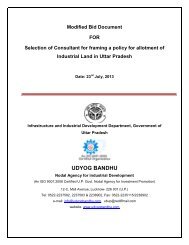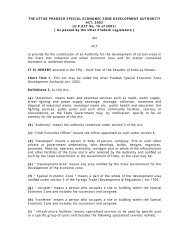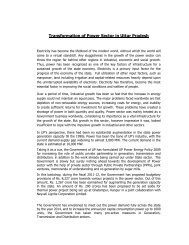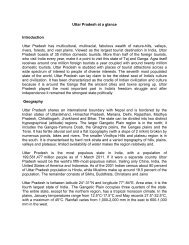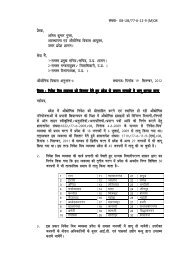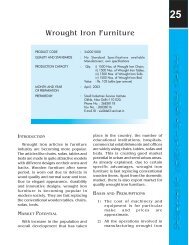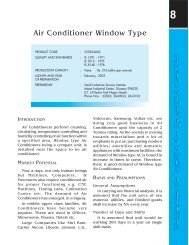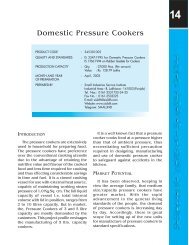PART - III - Udyog Bandhu
PART - III - Udyog Bandhu
PART - III - Udyog Bandhu
You also want an ePaper? Increase the reach of your titles
YUMPU automatically turns print PDFs into web optimized ePapers that Google loves.
i) EBITDA multipleThe EBITDA multiple or the earnings method is based on the premise that the value of abusiness is directly related to the quantum of its gross profits. The net profits are adjusted toreflect the operating recurring profits of the business on a standalone basis (i.e. after deductingextraordinary or unusual items, or items of a non-recurring nature). Further, the profits areadjusted for non-cash items (including depreciation and amortisation) and other factors, such asinterest and taxation (which vary from business to business) to derive EBITDA (EarningsBefore Interest, Taxation, Depreciation and Amortisations).The EBITDA multiple method takes into account the value or consideration paid by acquirersof similar businesses, and is computed by dividing the total consideration paid (after adjustingfor any debt assumed) by the EBITDA to derive a multiple, which can be applied to theEBITDA figure of the business being valued. i.e. adjusted maintainable EBITDA arecapitalised by an appropriate factor ("capitalisation factor") to arrive at the business value.EBITDA multiple = Enterprise Value / EBITDAWhere:Enterprise Value (EV) = Market value of Equity + Market value of DebtEBITDA = Earnings Before Interest, Tax, Depreciation and AmortizationTo illustrate, if we are valuing Company X with EBITDA of Rs. 150 million and in a similartransaction EV/EBIDTA has been 10 (EBIDTA multiple) then EV of Company X would beworked out as Rs. 1500 million and then debt would be deducted to arrive at the equity valueof Company X.ii)Sales multipleThe sales multiple techniques are based on a similar analysis of relevant acquisitions and arethe ratio of Enterprise Value to the current sales (net of excise duty, sales tax and non-recurringextra-ordinary income). It is calculated as follows:Sales multiple = Enterprises Value / Net sales of the current yearTo illustrate, if we are valuing Company X with sales of Rs. 500 million and in a similartransaction EV/Sales has been 4 (Sales multiple) then EV of Company X would be worked outas Rs. 2000 million. Then debt would be deducted to arrive at the equity value of Company X.The Transaction Multiple methodology suffers from the following drawbacks:Actual money required to earn the maintainable profits / sales of the business as a goingconcern (for instance, future capital expenditure) are not considered.This methodology does not take into account the time value of money.Notwithstanding these limitations, these multiples are widely used by investors to arrive atbenchmark values for a company.146




